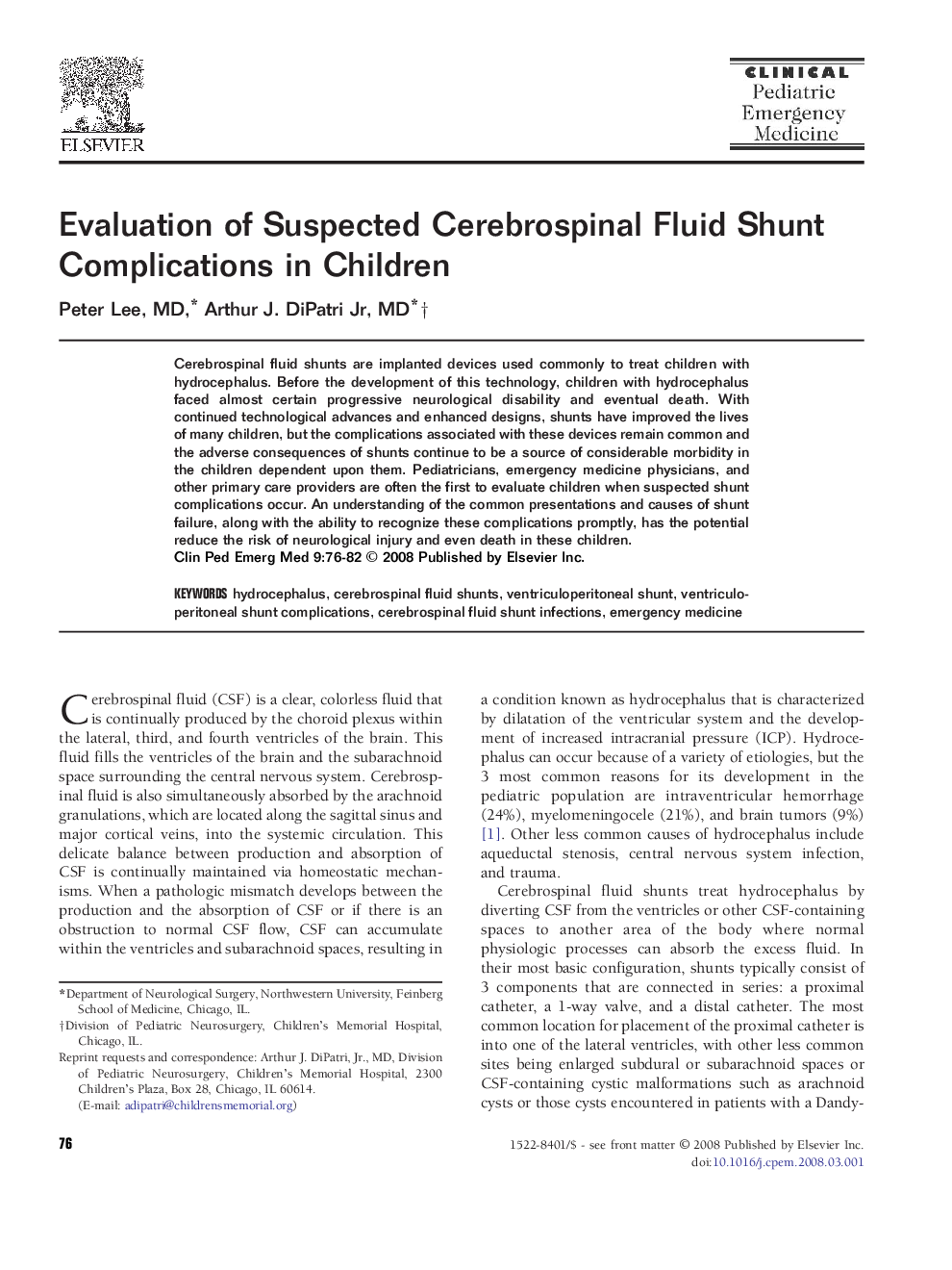| Article ID | Journal | Published Year | Pages | File Type |
|---|---|---|---|---|
| 3236152 | Clinical Pediatric Emergency Medicine | 2008 | 7 Pages |
Cerebrospinal fluid shunts are implanted devices used commonly to treat children with hydrocephalus. Before the development of this technology, children with hydrocephalus faced almost certain progressive neurological disability and eventual death. With continued technological advances and enhanced designs, shunts have improved the lives of many children, but the complications associated with these devices remain common and the adverse consequences of shunts continue to be a source of considerable morbidity in the children dependent upon them. Pediatricians, emergency medicine physicians, and other primary care providers are often the first to evaluate children when suspected shunt complications occur. An understanding of the common presentations and causes of shunt failure, along with the ability to recognize these complications promptly, has the potential reduce the risk of neurological injury and even death in these children.
